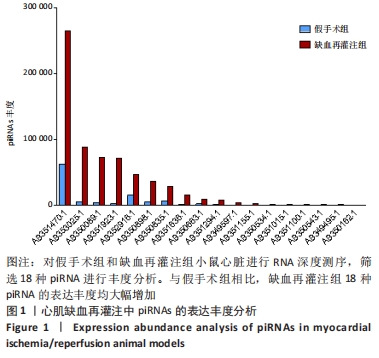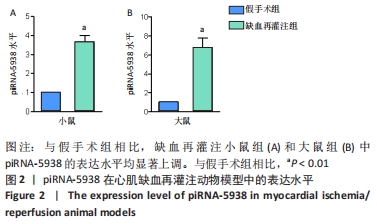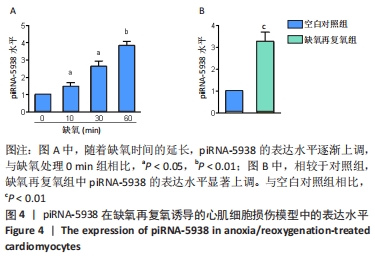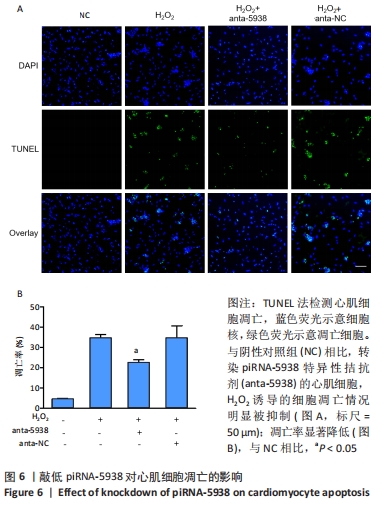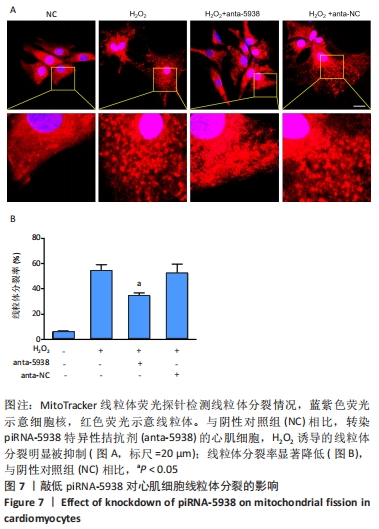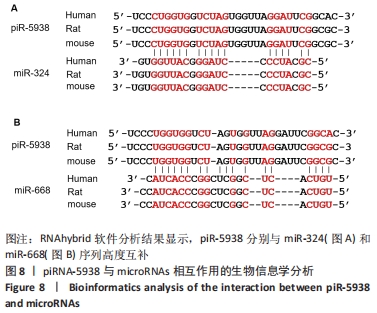[1] RAMACHANDRA CJA, HERNANDEZ-RESENDIZ S, CRESPO-AVILAN GE,
et al. Mitochondria in acute myocardial infarction and cardioprotection. EBioMedicine. 2020;57:102884.
[2] DEL RE DP, AMGALAN D, LINKERMANN A, et al. Fundamental Mechanisms of Regulated Cell Death and Implications for Heart Disease. Physiol Rev. 2019;99(4):1765-1817.
[3] POHJOISMäKI JL, GOFFART S. The role of mitochondria in cardiac development and protection. Free Radic Biol Med. 2017;106:345-354.
[4] SABOUNY R, SHUTT TE. Reciprocal Regulation of Mitochondrial Fission and Fusion . Trends Biochem Sci. 2020;45(7):564-577.
[5] VAN DER BLIEK AM, SHEN Q, KAWAJIRI S. Mechanisms of mitochondrial fission and fusion. Cold Spring Harb Perspect Biol. 2013;5(6):a011072.
[6] HUANG P, WANG L, LI Q, et al. Atorvastatin enhances the therapeutic efficacy of mesenchymal stem cells-derived exosomes in acute myocardial infarction via up-regulating long non-coding RNA H19. Cardiovasc Res. 2020;116(2):353-367.
[7] MAO Q, LIANG XL, ZHANG CL, et al. LncRNA KLF3-AS1 in human mesenchymal stem cell-derived exosomes ameliorates pyroptosis of cardiomyocytes and myocardial infarction through miR-138-5p/Sirt1 axis. Stem Cell Res Ther. 2019;10(1):393.
[8] LI A, YU Y, DING X, et al. MiR-135b protects cardiomyocytes from infarction through restraining the NLRP3/caspase-1/IL-1β pathway. Int J Cardiol. 2020;307:137-145.
[9] YANG D, YU J, LIU HB, et al. The long non-coding RNA TUG1-miR-9a-5p axis contributes to ischemic injuries by promoting cardiomyocyte apoptosis via targeting KLF5. Cell Death Dis. 2019;10(12):908.
[10] OZATA DM, GAINETDINOV I, ZOCH A, et al. PIWI-interacting RNAs: small RNAs with big functions. Nat Rev Genet. 2019;20(2):89-108.
[11] DONG J, WANG X, CAO C, et al. UHRF1 suppresses retrotransposons and cooperates with PRMT5 and PIWI proteins in male germ cells. Nat Commun. 2019;10(1):4705.
[12] NISHIMURA T, NAGAMORI I, NAKATANI T, et al. PNLDC1, mouse pre-piRNA Trimmer, is required for meiotic and post-meiotic male germ cell development. EMBO Rep. 2018;19(3):e44957.
[13] GUAN Y, KEENEY S, JAIN D, et al. yama, a mutant allele of Mov10l1, disrupts retrotransposon silencing and piRNA biogenesis. PLoS Genet. 2021;17(2):e1009265.
[14] CHEN P, KOTOV AA, GODNEEVA BK, et al. piRNA-mediated gene regulation and adaptation to sex-specific transposon expression in D. melanogaster male germline. Genes Dev. 2021;35(11-12):914-935.
[15] SELLITTO A, GELES K, D’AGOSTINO Y, et al. Molecular and Functional Characterization of the Somatic PIWIL1/piRNA Pathway in Colorectal Cancer Cells. Cells. 2019;8(11):1390.
[16] JAIN G, STUENDL A, RAO P, et al. A combined miRNA-piRNA signature to detect Alzheimer’s disease. Transl Psychiatry. 2019;9(1):250.
[17] SHEN L, WANG C, CHEN L, et al. Dysregulation of MicroRNAs and PIWI-Interacting RNAs in a Caenorhabditis elegans Parkinson’s Disease Model Overexpressing Human α-Synuclein and Influence of tdp-1. Front Neurosci. 2021;15:600462.
[18] TAN L, MAI D, ZHANG B, et al. PIWI-interacting RNA-36712 restrains breast cancer progression and chemoresistance by interaction with SEPW1 pseudogene SEPW1P RNA. Mol Cancer. 2019;18(1):9.
[19] GAO XQ, ZHANG YH, LIU F, et al. The piRNA CHAPIR regulates cardiac hypertrophy by controlling METTL3-dependent N(6)-methyladenosine methylation of Parp10 mRNA. Nat Cell Biol. 2020;22(11):1319-1331.
[20] YANG J, XUE FT, LI YY, et al. Exosomal piRNA sequencing reveals differences between heart failure and healthy patients. Eur Rev Med Pharmacol Sci. 2018;22(22):7952-7961.
[21] ZHANG BF, JIANG H, CHEN J, et al. LncRNA H19 ameliorates myocardial infarction-induced myocardial injury and maladaptive cardiac remodelling by regulating KDM3A. J Cell Mol Med. 2020;24(1):1099-1115.
[22] CHEN L, LI S, ZHU J, et al. Mangiferin prevents myocardial infarction-induced apoptosis and heart failure in mice by activating the Sirt1/FoxO3a pathway. J Cell Mol Med. 2021;25(6):2944-2955.
[23] VELLA S, GALLO A, LO NIGRO A, et al. PIWI-interacting RNA (piRNA) signatures in human cardiac progenitor cells. Int J Biochem Cell Biol. 2016;76:1-11.
[24] LIPPS C, NORTHE P, FIGUEIREDO R, et al. Non-Invasive Approach for Evaluation of Pulmonary Hypertension Using Extracellular Vesicle-Associated Small Non-Coding RNA. Biomolecules. 2019;9(11):666.
[25] TAKAHASHI T, HEATON SM, PARRISH NF. Mammalian antiviral systems directed by small RNA. PLoS Pathog. 2021;17(12):e1010091.
[26] YAMASHIRO H, SIOMI MC. PIWI-Interacting RNA in Drosophila: Biogenesis, Transposon Regulation, and Beyond. Chem Rev. 2018; 118(8):4404-4421.
[27] ZOCH A, AUCHYNNIKAVA T, BERRENS RV, et al. SPOCD1 is an essential executor of piRNA-directed de novo DNA methylation. Nature. 2020; 584(7822):635-639.
[28] SHEN S, YU H, LIU X, et al. PIWIL1/piRNA-DQ593109 Regulates the Permeability of the Blood-Tumor Barrier via the MEG3/miR-330-5p/RUNX3 Axis. Mol Ther Nucleic Acids. 2018;10:412-425.
[29] LIU X, ZHENG J, XUE Y, et al. PIWIL3/OIP5-AS1/miR-367-3p/CEBPA feedback loop regulates the biological behavior of glioma cells. Theranostics. 2018;8(4):1084-1105.
[30] LENG X, MA J, LIU Y, et al. Mechanism of piR-DQ590027/MIR17HG regulating the permeability of glioma conditioned normal BBB. J Exp Clin Cancer Res. 2018;37(1):246.
[31] HU YH, SUN J, ZHANG J, et al. Long non-coding RNA ROR sponges miR-138 to aggravate hypoxia/reoxygenation-induced cardiomyocyte apoptosis via upregulating Mst1. Exp Mol Pathol. 2020;114:104430.
[32] JIN Y, NI S. miR-496 remedies hypoxia reoxygenation-induced H9c2 cardiomyocyte apoptosis via Hook3-targeted PI3k/Akt/mTOR signaling pathway activation. J Cell Biochem. 2020;121(1):698-712.
[33] WANG Y, JIANG Y, SUN X, et al. Downregulation of miR-200a protects cardiomyocyte against apoptosis. Biomed Pharmacother. 2020;123: 109303.
[34] YANG J, HUANG X, HU F, et al. LncRNA ANRIL knockdown relieves myocardial cell apoptosis in acute myocardial infarction by regulating IL-33/ST2. Cell Cycle. 2019;18(23):3393-3403.
[35] ZHANG X, WANG Q, WANG X, et al. Tanshinone IIA protects against heart failure post-myocardial infarction via AMPKs/mTOR-dependent autophagy pathway. Biomed Pharmacother. 2019;112:108599.
[36] ZHANG J, HUANG L, SHI X, et al. Metformin protects against myocardial ischemia-reperfusion injury and cell pyroptosis via AMPK/NLRP3 inflammasome pathway. Aging (Albany NY). 2020;12(23):24270-24287.
[37] WU Y, PAN N, AN Y, et al. Diagnostic and Prognostic Biomarkers for Myocardial Infarction. Front Cardiovasc Med. 2020;7:617277.
[38] ZHU X, LU X. MiR-423-5p inhibition alleviates cardiomyocyte apoptosis and mitochondrial dysfunction caused by hypoxia/reoxygenation through activation of the wnt/β-catenin signaling pathway via targeting MYBL2. J Cell Physiol. 2019;234(12):22034-22043.
[39] ZHU Y, ZHAO P, SUN L, et al. Overexpression of circRNA SNRK targets miR-103-3p to reduce apoptosis and promote cardiac repair through GSK3β/β-catenin pathway in rats with myocardial infarction. Cell Death Discov. 2021;7(1):84.
[40] SU Q, LIU Y, LV XW, et al. Inhibition of lncRNA TUG1 upregulates miR-142-3p to ameliorate myocardial injury during ischemia and reperfusion via targeting HMGB1- and Rac1-induced autophagy.
J Mol Cell Cardiol. 2019;133:12-25.
[41] YANG M, KONG DY, CHEN JC. Inhibition of miR-148b ameliorates myocardial ischemia/reperfusion injury via regulation of Wnt/β-catenin signaling pathway. J Cell Physiol. 2019;234(10):17757-17766.
[42] ZHOU R, HUANG W, FAN X, et al. miR-499 released during myocardial infarction causes endothelial injury by targeting α7-nAchR. J Cell Mol Med. 2019;23(9):6085-6097.
|

